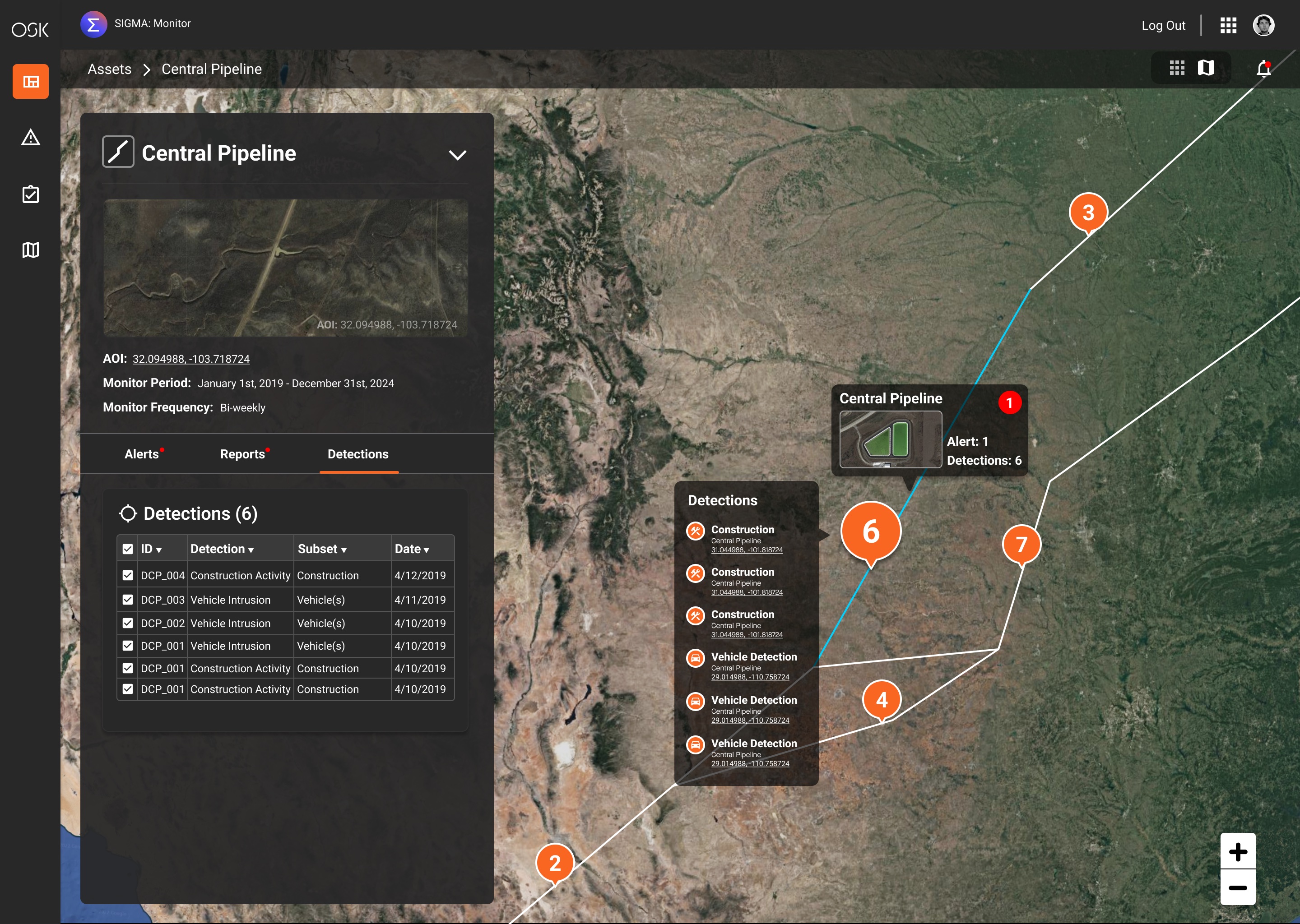Orbital Sidekick raises $10M to bring hyperspectral imaging to oil and gas pipeline monitoring
Historically, oil and gas companies have monitored pipeline leaks using inefficient, expensive methods: workers equipped with handheld optical gas imaging cameras, for example. Or, as Orbital Sidekick CEO Dan Katz put it in a recent interview with TechCrunch, “a young pilot sticking their head out the window of a crop-duster.”
“There’s really no persistent, objective, high-accuracy monitoring service that’s available to operators today,” he said. So he and Orbital Sidekick co-founder Tushar Prabhakar set out to create one. Their startup’s solution is a data analytics product that generates intelligence using a constellation of satellites equipped with hyperspectral sensors — and it’s caught the energy industry’s attention.
Today, Orbital Sidekick announced the close of a $10 million investment led by Energy Innovation Capital, with additional participation from major North American energy companies Williams and ONEOK. The University of Minnesota’s Endowment and existing investors 11.2 Capital, Syndicate 708 and the CIA’s strategic investment arm In-Q-Tel also participated.
The new capital is a major boon as the startup seeks to launch its first space-based commercial analytics product and as it gears up to launch its first two commercial satellites in April, aboard SpaceX’s Transporter-7 rideshare mission. Orbital Sidekick is also planning to launch two satellites, which it calls Global Hyperspectral Observation Satellite (GHOSt), each aboard Transporter-8 and Transporter-9. That means if all goes to plan, the company will have a six-satellite GHOSt constellation in orbit before winter this year.
Orbital Sidekick was founded by Katz and Prabhakar in 2016. Keeping true to the mythos of Silicon Valley, the two founded the company in Katz’s garage in San Francisco. The pair had met while working for Space Systems/Loral, a legacy space company that was acquired by Maxar in 2012. Katz has an academic background in physics and astrophysics, while Prabhakar has experience working for some energy tech companies; combined, the two realized there could be real demand for hyperspectral imagery in energy and other sectors.
The company sent its first tech demo to space in 2018 — a breadbox-sized hyperspectral camera that spent a year-and-half bolted outside the International Space Station. That was followed by a 30-kilogram tech demo satellite called Aurora, which launched in June 2021. (The GHOSt satellites are 100 kilograms each.) Alongside this, the company has been generating revenue through aerial programs, which use the hyperspectral system on an aircraft that flies at an altitude of about 1,000 feet. But the company quickly realized that aerial was not a scalable solution.
“There are millions of miles of pipeline across the world,” Katz said. “To try to do that with aircraft is just not feasible, or scalable, from a margin standpoint.”
Hyperspectral lets companies “see” the chemical fingerprint of different substances, like gas, by collecting and measuring hundreds of wavelength bands. For pipelines in particular, hyperspectral information can help identify leaks even if the pipeline is buried underground, as is the case with the vast majority.
Compared to competitors, Katz said Orbital Sidekick provides higher resolution, at eight meters per pixel, by collecting more than 500 spectral channels. But the “big differentiator,” he said, is the company’s in-house analytics and intelligence platform. That product is called SIGMA, or Spectral Intelligence Global Monitoring Application.

Image Credits: Orbital Sidekick (opens in a new window)
Orbital Sidekick is also developing solutions for defense customers. Notably, the company won a $16 million STRATFI, or Strategic Funding Increase, contract from the U.S. Air Force that matched dollar-for-dollar its $16 million Series A. For defense customers, hyperspectral imagery could be used to detect chemical weapons, or used with other imaging sensors to provide warfighters with a more complete picture of a battlefield.
“Sixteen million dollars in non-diluted capital really just helped accelerate our constellation plans,” Katz said.
Looking ahead, Orbital Sidekick is planning to expand within the energy sector, monitoring not just oil and gas pipelines but oil wells or off-shore oil facilities. Katz said the company is interested in exploring how customers can use Orbital Sidekick’s data and tech to verify carbon credits under a carbon credit marketplace. The startup also has plans in place to expand the GHOSt constellation to at least 14 satellites, to provide, Katz said, a hyperspectral “atlas of the world.”


